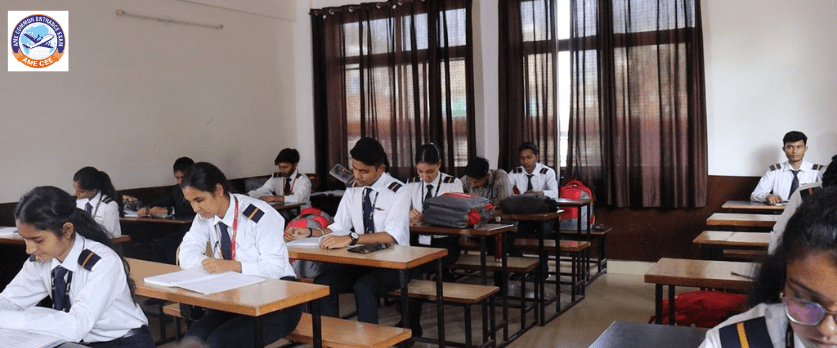Ever wondered who the aspiring individuals are, gearing up to become the backbone of aviation safety? Let’s delve into the world of AME candidates, exploring their aspirations, training journeys, and the exciting path they tread towards becoming Aircraft Maintenance Engineers.
Aviation Enthusiasts: Passionate about the Skies
AME candidates often start as aviation enthusiasts. Whether fascinated by the roar of engines or the magic of flight, these individuals share a profound love for everything related to airplanes and the boundless sky.
High School Graduates: Embarking on a Technical Journey
Many AME candidates begin their journey right after 10+2 examination with Physics, Chemistry and Mathematics from a recognized board or University or its equivalent. Diploma in Aeronautical, Mechanical, Electrical and Electronics engineering recognized by state technical education board shall be considered as equivalent qualification. Armed with a curiosity for mechanics and a knack for technical subjects, they step into the world of aviation with a vision of contributing to the safety of aircraft.
Mechanical Marvels: A Flair for Fixing Things
AME candidates often possess a natural flair for fixing things. Whether it’s dismantling gadgets or troubleshooting household appliances, these budding engineers find joy in understanding how things work and putting them back together.
Problem-Solving Prowess: Navigating Challenges with Ease
One key trait of AME candidates is their knack for problem-solving. They enjoy the challenge of identifying and fixing issues, much like solving intricate puzzles. This quality becomes crucial when troubleshooting aircraft systems.
Detail-Oriented Explorers: Noticing Every Nut and Bolt
Attention to detail is a hallmark of aircraft maintenance engineering candidates. From meticulously inspecting components to ensuring precision in maintenance tasks, these future engineers have a keen eye for every nut, bolt, and detail that contributes to aircraft safety.
Academic Achievers: Mastering Technical Knowledge
AME candidates dive into academic programs that equip them with the necessary technical knowledge. Whether pursuing a diploma or degree in aviation maintenance, they immerse themselves in subjects like aircraft systems, avionics, and regulations.
Hands-On Learners: From Classrooms to Workshops
Classroom learning is just the beginning. AME candidates thrive in hands-on environments like workshops, where they get to apply theoretical knowledge to real-world scenarios. These practical experiences build the skills needed for actual aircraft maintenance.
Rule Followers: Adhering to Aviation Regulations
Safety is paramount in aviation, and AME candidates understand the importance of following rules and regulations. They embrace the discipline required to ensure that every maintenance task complies with aviation standards set by authorities.
Team Players: Collaborating for Sky-High Safety
The aviation world is a collaborative one, and AME candidates are team players. They recognize the significance of working harmoniously with pilots, fellow engineers, and air traffic controllers to ensure the safety of every flight.
Future Aviators: Aspiring for a Career in the Skies
Beyond the wrenches and technical manuals, AME candidates often harbor dreams of a career in the skies. Some may aspire to become pilots or pursue advanced roles in aviation management after gaining hands-on experience as maintenance engineers.
In summary, AME candidates are a unique blend of aviation enthusiasts, problem solvers, and detail-oriented individuals. Their journey involves a mix of academic learning, hands-on experiences, and a commitment to upholding the highest standards of aviation safety. As they embark on this exciting path, AME candidates pave the way for a future where the skies remain safe and the magic of flight continues to captivate imaginations.
To become an aircraft maintenance engineer you may could join AME engineering through AME COMMON ENTRANCE EXAM (AME CEE) this examination you may join AME engineering approved by DGCA, EASA or UGC.


